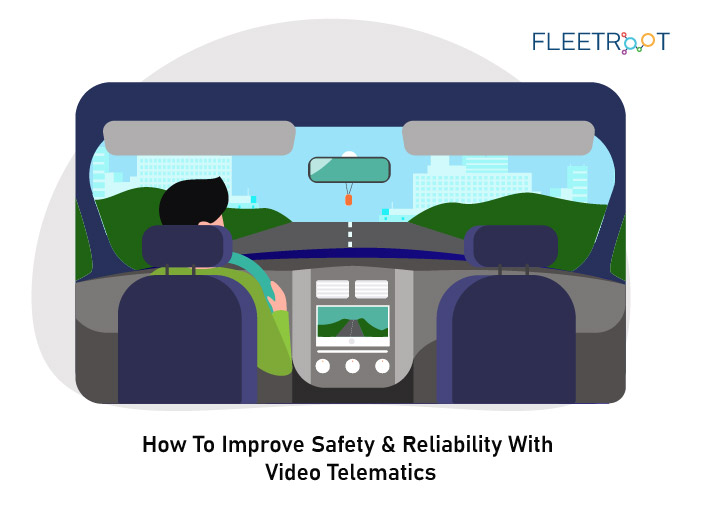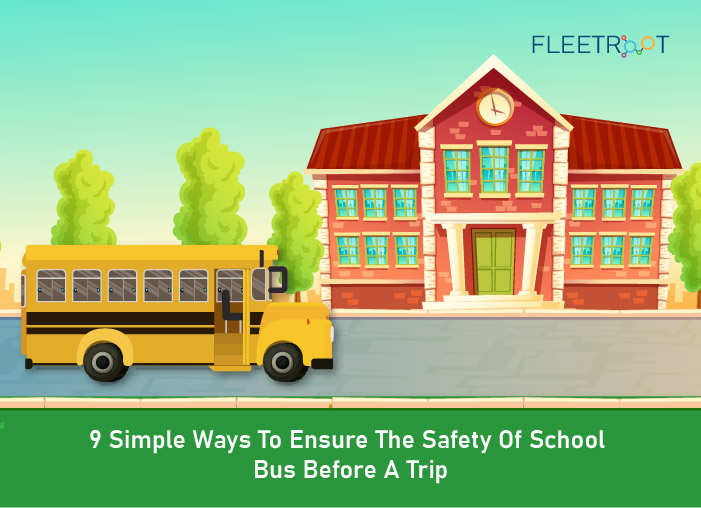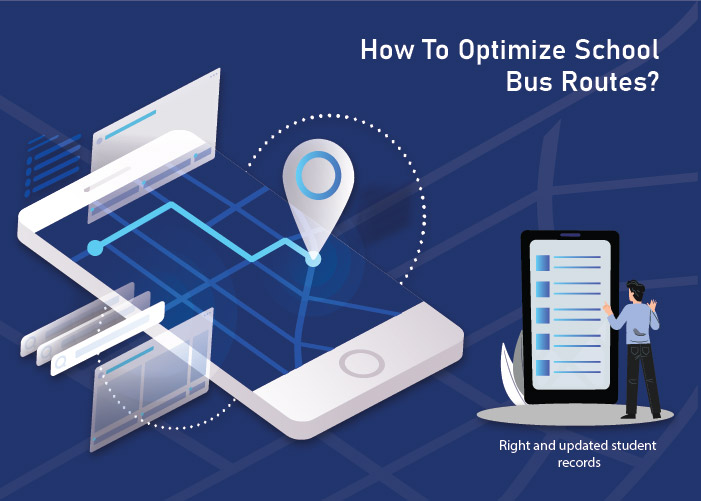Introduction
Ensuring the safety and security of students during the school bus commute is a fundamental concern for any school. In recent times, GPS and IOT based telematics technologies have made great advances, leveraging sensor to machine communication across key electronic components of the school bus to bring greater clarity on safety and efficiency in school bus transportation.
At the forefront of these technologies is Video Telematics, a breakthrough new technology that promises an unprecedented level of visibility and analytics to take school bus safety and reliability to a whole new level.
What Is Video Telematics?
Video Telematics is an integrated video camera technology that combines video surveillance with vehicle analytics. It incorporates multiple high resolution connected cameras equipped with specialized sensors.
It includes front (road), back facing as well as bus facing cameras with sound for maximum audio-visual clarity on safety incidents. It can capture driver behavior as well as road information and analyze them using artificial intelligence (AI) tools and also trigger alerts to prompt real time corrective actions.
It can also capture and transmit a live feed from inside the bus.
The Benefits to Schools
1.Promoting Driver Accountability
Once the school bus is on the road, the driver and attendant are the sole custodians of the students’ well-being. Isn’t it ironic then, that majority of school bus accidents are caused by driver negligence, aggressive driving, and driver fatigue?
The video telematics system automatically downloads a rolling 72 hours of continuous driving footage, and uses optical detection sensors to detect speed signs and lane demarcation, while other vehicle sensors detect aggressive acceleration, harsh braking, sudden swerving etc.
AI and analytical tools are used to compare vehicle performance against road signs and safety regulations, and precise video clippings of safety incidents are then created and stored over the cloud for evaluation by the transport manager.
Thus, whether drivers are violating traffic signs, not wearing the seatbelt, using their mobile phone or driving rashly – there is really nowhere to hide.
2.Correcting Driving in Real Time
The system not only records safety events as they happen but also gives out beep alerts – the intensity of the beep increases with the severity of the lapse. Some systems also give a live audio feedback, so drivers are forewarned and can immediately correct their behavior.
3.Preventing Collisions
Tailgating is a serious violation and many accidents are caused when drivers simply don’t maintain a safe distance from the vehicle in front. With the video telematics system in place, the distance of the vehicle in front is detected and time to headway is calculated. The driver is instantly alerted if the distance is equivalent to 3 seconds or less.
4.Improving Driver Training Programs
The video feed is analyzed, and the safety incidents are categorized using AI and ML technology. E.g. video footage of harsh braking, distracted driving, impending collision etc. These live examples provide a real-world context to driver training programs, making them more realistic and goal oriented.
5.Personalized Coaching
Video clippings of various safety incidents encountered by a driver over a period of time are stored over the cloud and evaluated by transport managers. These clippings can then be compiled into a personalized presentation and used to coach the driver in only those skills that he specifically needs to build.
6.Driver Scorecards
When it comes to driving habits, skills, stamina and sense of responsibility, not all drivers are the same. Each of them may be good in some aspects but needs improvement in some other aspect.
The video telematics system makes use of mobile apps and gamification techniques to provide a snapshot, a safety score and detailed analysis of each driver’s driving behavior, backed by real world proof in the form of video clippings. Drivers can access their progress report on their smart phones, compare their safety scores with others, and feel continually motivated to improve their scores over time.
7.Live Surveillance of Students
Children are vulnerable to various safety threats even inside the school bus. There have been cases where a driver, attendant or even a nani have misbehaved with a child in the bus.
Also, when students of different age groups travel together, there are bound to be incidents of bullying and rowdy behavior. Thanks to advanced IP cameras and wireless networking, the school bus can immediately transmit on demand the live footage of safety incidents happening inside the bus, making it easier for transport and school authorities to take decisive action against offenders.
The system can also playback the video footage in case school authorities want to check any incident that may have happened during a trip.
The live surveillance system is also useful to keep a track of students’ onboarding and de-boarding times. In case a child gets left behind in the bus, they would be easily detected by the system.
8.Recording Illegal Passing
In spite of strict traffic regulations, illegal passing of vehicles continues and poses a grave threat to children alighting from the school bus.
Predictive Stop Arm cameras installed on the side of the bus above the stop arm use radar sensing technology and AI technology to detect an incoming vehicle’s speed and distance, and its likelihood of passing the school bus when the stop arm is indicated.
The system then not only records a live feed of the vehicle, but also detects and stores the number plate information. Simultaneously, the system also issues a verbal warning to the driver and children to stay back and not cross at that time.
Thanks to this system, drivers can now focus on taking care of the children instead of trying to manually record vehicle details.
9.Promoting School Bus Reliability
By actively helping drivers to continually improve their performance, this system drastically reduces incidences of rash driving, collisions and vehicle downtime, and makes the school transportation more reliable, dependable, and transparent. This in turn wins the confidence and satisfaction of parents and school authorities.
10.Reducing Costs and Liabilities
Implementing this system not only reduces the risk of accidents and breakdowns, but also reduces insurance premiums since insurance companies are assured of a high level safety measures in place. Additionally, video footage acts as conclusive proof in legal matters and reduces the overall liability of schools and transport authorities.
Conclusion
After being widely adopted in the commercial fleets, Video Telematics and its many benefits are now becoming apparent and accessible to schools. Advanced GPS and IOT based school bus tracking system now incorporate video telematics as the gold standard of safety measures in school bus transportation.
Want to learn more about how to increase the safety and reliability of your school bus fleet?
Call us for a free demo today!



